Crawler cranes are a common sight on major construction projects. They are mobile, unlike tower cranes, and at the bigger sizes have more height and weight capacity than truck cranes. If you are looking for a crawler crane, there are many different types and sizes available, so you will want to choose one that is right for your requirements. This article reviews the range of machines available, and considers the key factors applicable in choosing the right model for your needs.
Table of Contents
The projected growth of the crawler crane market
What is a crawler crane?
What are the main features of a crawler crane?
What is the range of crawler cranes available?
The importance of load sensors
Final thoughts
The projected growth of the crawler crane market
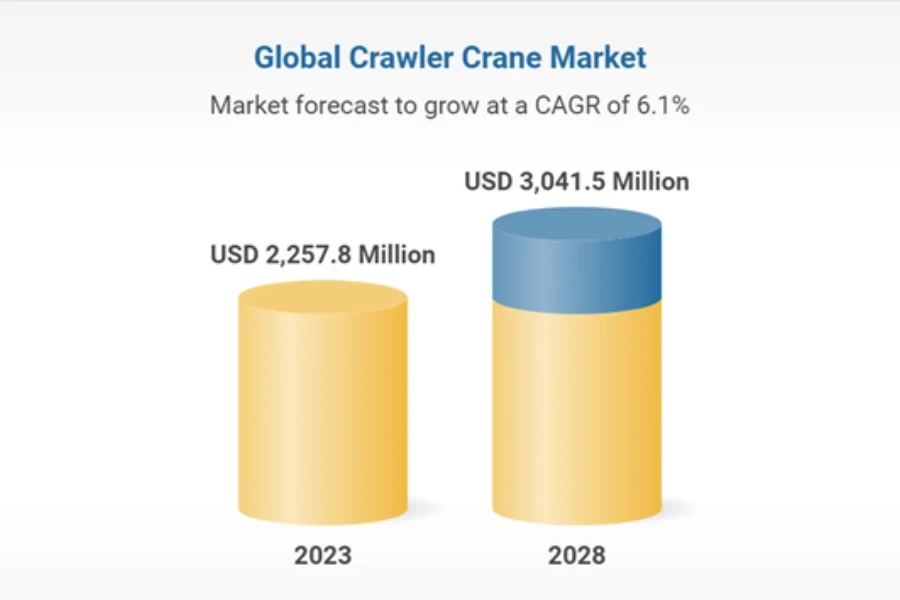
The global crawler crane market is projected to grow at a healthy 6.1% compound annual growth rate (CAGR) from its 2023 market value of US$ 2,257.8m to a 2028 value of US$ 2173.1m. This growth is fueled by the booming construction industry post-pandemic, with major projects in high-rise buildings and infrastructure development well underway. Together with the growth of wind farm development projects worldwide, the global need for crawler cranes is growing well.
What is a crawler crane?
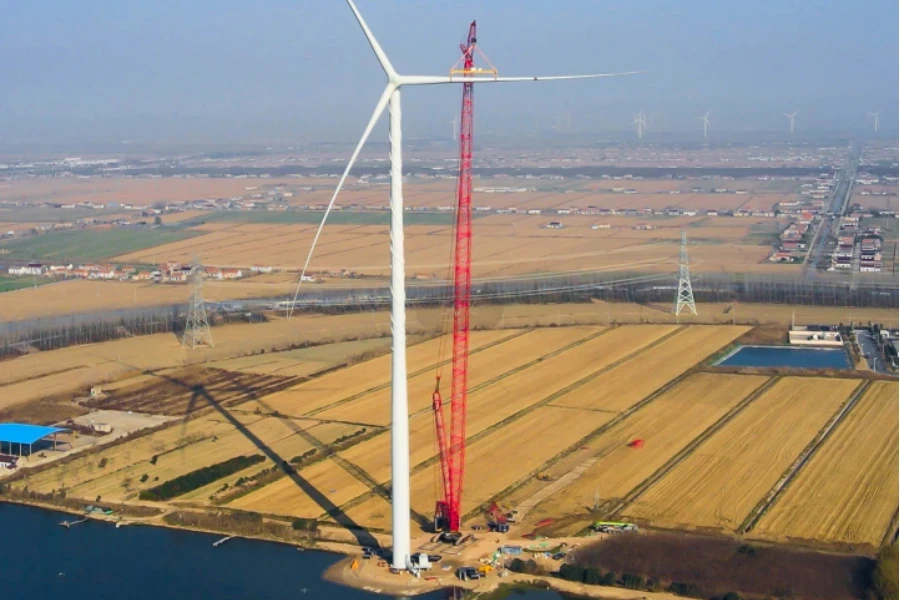
Crawler cranes are heavy-duty cranes mounted on a caterpillar track chassis. These can be much larger than truck-mounted cranes and are typically used on very large construction and infrastructure projects because of their stability and high lifting capacity. They can be found on most high construction projects, such as skyscraper construction, bridge building, and wind turbine assembly.
Crawler cranes have a crane boom and cab on an upper carriage, mounted on a tracked undercarriage. The crane boom can be either a telescopic box boom or lattice, with an optional jib extension. The majority of large crawler cranes use a lattice boom to combine strength with lightness, and to give the best stability for high and heavy lifts.
The upper carriage crane and cab can rotate 360 degrees and has mountings to hold counterweights, which are important for stability. A steel cable hoist rope runs through the boom, through pulleys (sheaves) to an attached crane hook, and the hook can be replaced with other fittings such as an electromagnet, grapple or clamshell.
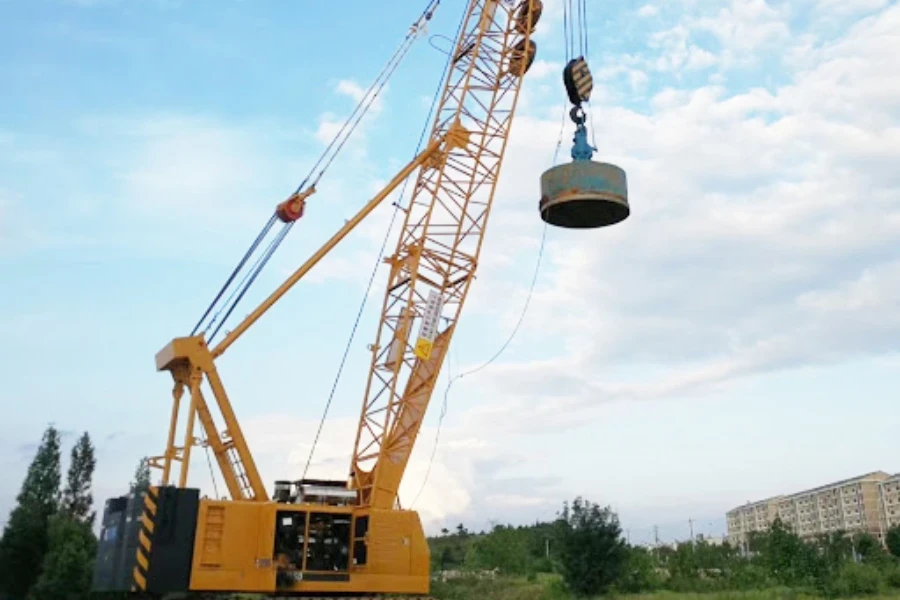
Crawler cranes are designed to lift and move heavy weights up to great heights, and therefore stability is of primary importance. This compromises their mobility as their size and length (especially with a long boom) makes their transportation difficult. Crawler cranes will only move slowly on their tracks and are not usually roadworthy, so must be moved on large truck transporters from site to site. Larger cranes will need to be disassembled to be moved, and then reassembled at the new site. Therefore for projects needing more rapid mobility, working with small loads and low heights, a truck crane may be more suitable than a small crawler crane.
Small cranes can lift under 30 tons, with a limited lift of around 160 feet (50m), but larger versions can lift upwards of 3000 tons up to heights of around 650 feet (200m). Once a large crane is moved into position, it will be fully assembled and loaded with counterweights. Crawler cranes are designed to have a low center or gravity to improve stability, with a heavy tracked undercarriage, and additional counterweights to provide an optimal weight distribution. They do not usually require outriggers in the same way as truck cranes, but many models do include them.
In selecting the best fit crawler crane, the buyer will want to consider the height and weight lifting requirements of the project, as well as the mobility and flexibility required.
What are the main features of a crawler crane?
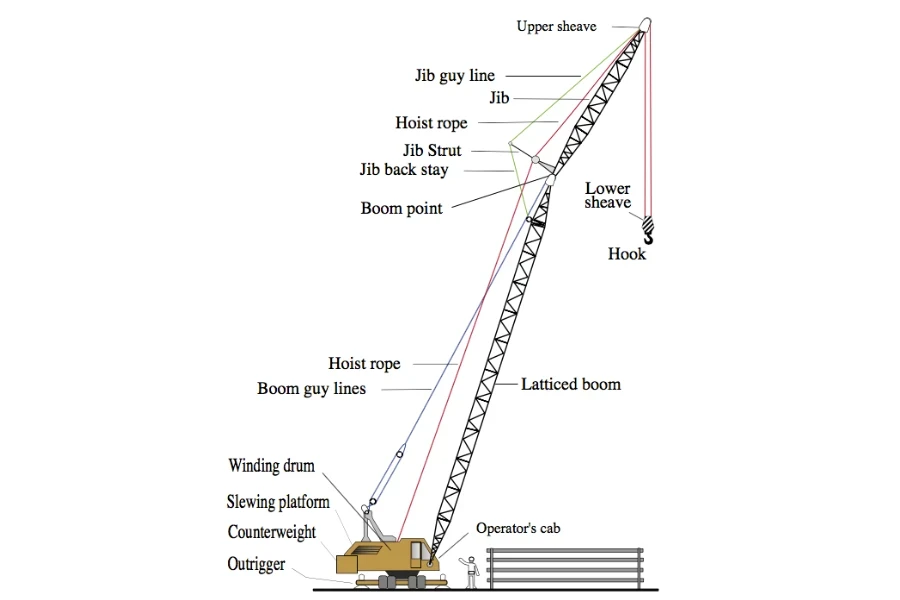
There are a few key features that make a crawler crane different from tower or truck cranes:
Tracked undercarriage: Crawler cranes have a tracked ‘caterpillar’ undercarriage that provides mobility as well as stability. The tracks allow for slow but steady movement across the uneven terrain typical on construction sites. The wide base, combined with the heavy weight of the track assembly, give the crawler a low center of gravity and a stability for the crane, especially when on level ground. If additional outriggers are fitted, these can be extended to provide a wider and more secure footprint. By comparison, tower cranes are fixed to a concrete platform, and truck cranes are mounted to a multi-wheeled truck base.
Slewing platform: The upper carriage of the crane is called the slewing platform and holds the operator’s cab, engine, counterweights, winding drum and the base footing of the boom. It can rotate the crane horizontally (slew) a full 360 degrees to ensure that the operator always has full view of the lifting. The engine sits behind the cab, and behind that are the counterweights that give the crane its ability to lift, turn and move heavy objects to high levels. The winding drum holds the hoist rope and controls the winding in or letting out of the hook (or other fittings).
Telescopic box boom: Telescopic booms are designed to extend and retract hydraulically, making the crane easier to move around. These cranes are very versatile on a construction site, able to adjust height in tight spaces, and are very stable for lower weights and lower heights. They are typically available up to a lift capacity of around 50-60 tons, with maximum heights of around 200 feet (60m).
Lattice boom: For larger crawler cranes, a lattice boom is fitted. Lattice booms have a framework of lightweight steel spars, in a lattice design that distributes the weight of the load across the frame. Lattice booms have a fixed length that needs to be assembled for use, and disassembled to be moved. This makes them less versatile than telescopic booms, but they have a much larger weight capability that can exceed 3,000 tons and reach heights of 650 feet (200m).
What is the range of crawler cranes available online?
There is a wide range of lifting capacities available online, from small sizes to the ‘super lift’ cranes of well over 300 tons. This section will look at models in the lower range of 20-150 tons that may compete with truck cranes, 150-300 tons range that have a wide selection available, and upwards of 300 tons that are into the super lift category.
Price ranges for these cranes can vary enormously, and lifting capacity is not a clear indication. Many sellers will offer a range of prices that can vary tenfold, with a much lower price for multiple units ordered, to a higher price for a single unit.
20-150 ton range
Lower weight capacity crawler cranes offer the choice between a telescopic box boom or lattice boom. Below 50 tons, crawler cranes are more likely to be fitted with a telescopic box boom, up to around 50-60 tons maximum. Cranes fitted with lattice booms start around a 50 tons capacity.
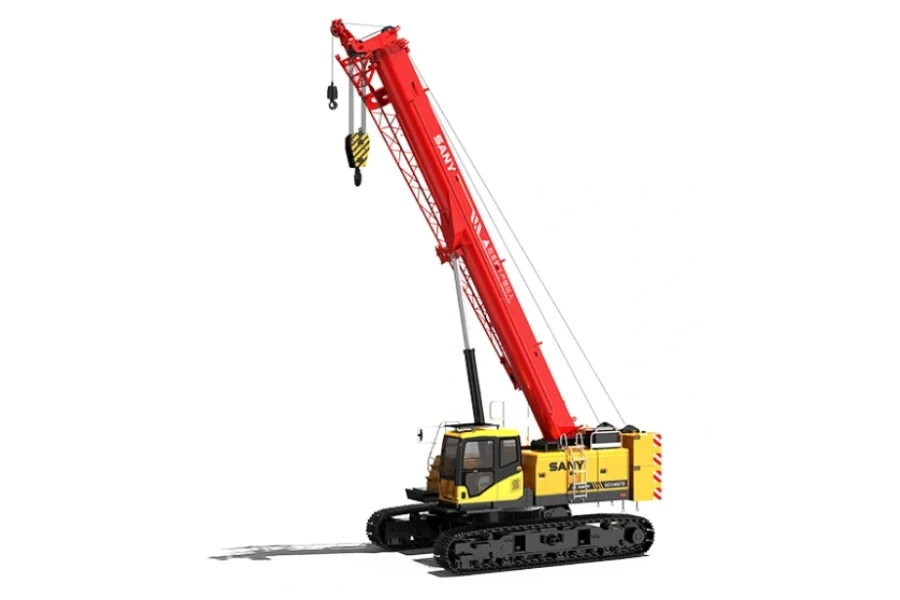
The SANY SCC260TB is a 26 ton crane fitted with a telescopic box boom, has a maximum height lift of 160 feet (50m), and sells for between US$ 176,000 and US$ 180,000.
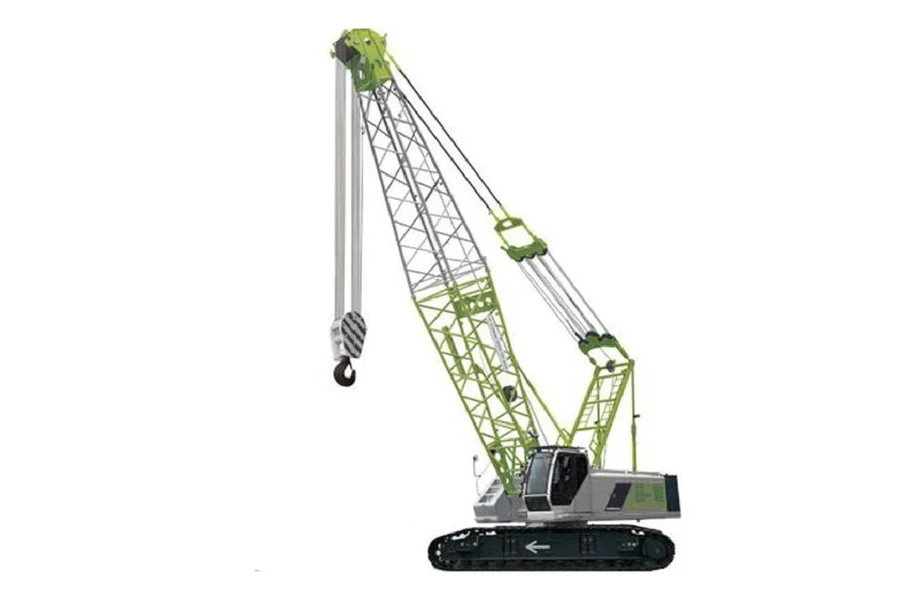
The Zoomlion ZTM500 is a 50 ton capacity crawler crane with a lattice boom that can lift to a maximum of 200 feet (60m). It sells for between US$ 10,000 and US$ 100,000, depending on the number of units purchased.
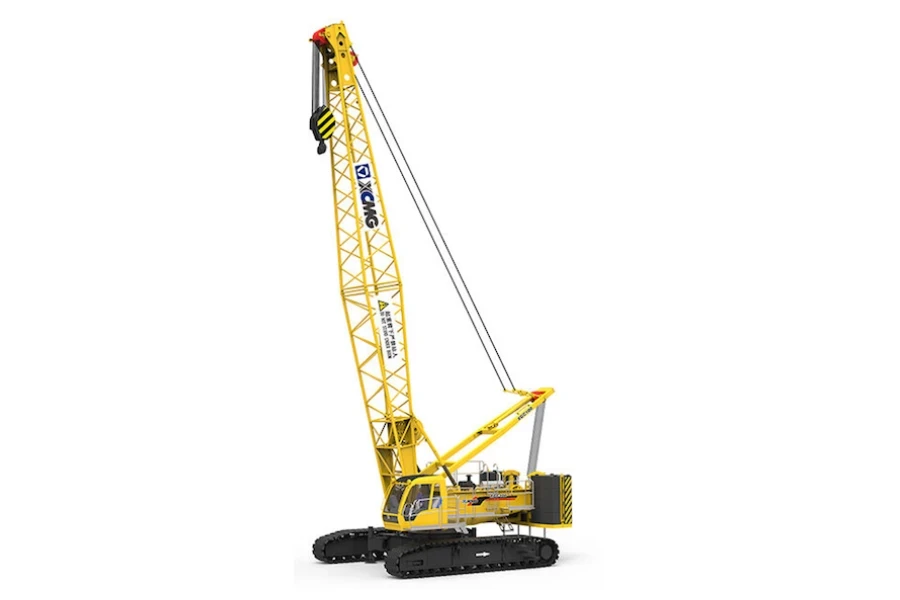
The XCMG XGC100 crawler crane is an example of a lattice crane with more capacity than the telescopic boom models. This crawler can lift up to 100 tons to a height of 230 feet (70 m). It is available for between US$ 100,000 and US$ 1,000,000, depending on the number of units ordered.
150-300 ton range
Above 150 tons, lattice crawler cranes fit into their own niche, with telescopic cranes unable to handle the heights and weights that these crawlers can manage.
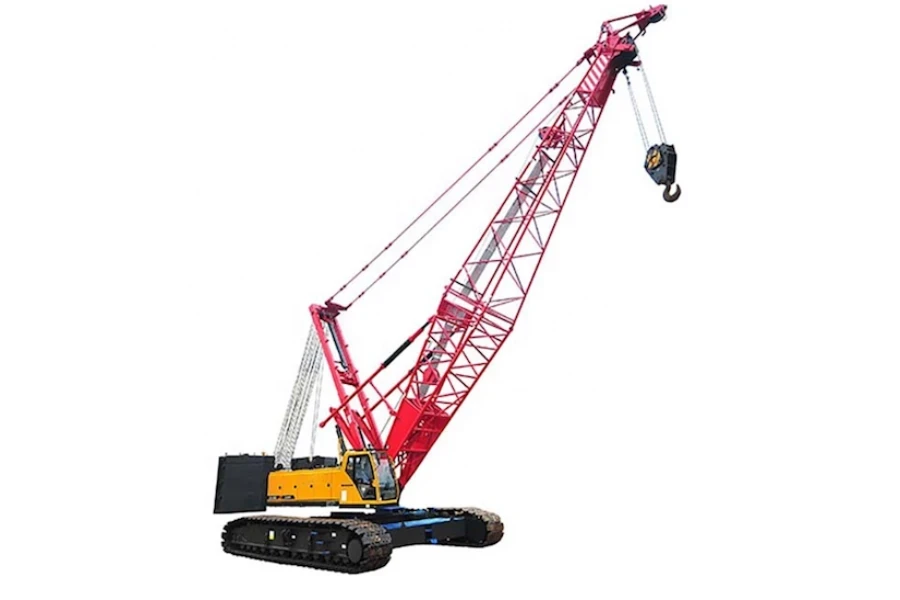
At the 150 ton capacity, the SANY SCC1500 lattice crane can lift to a height of 312 feet (95m), and is priced between US$ 270,000 and US$ 310,000.
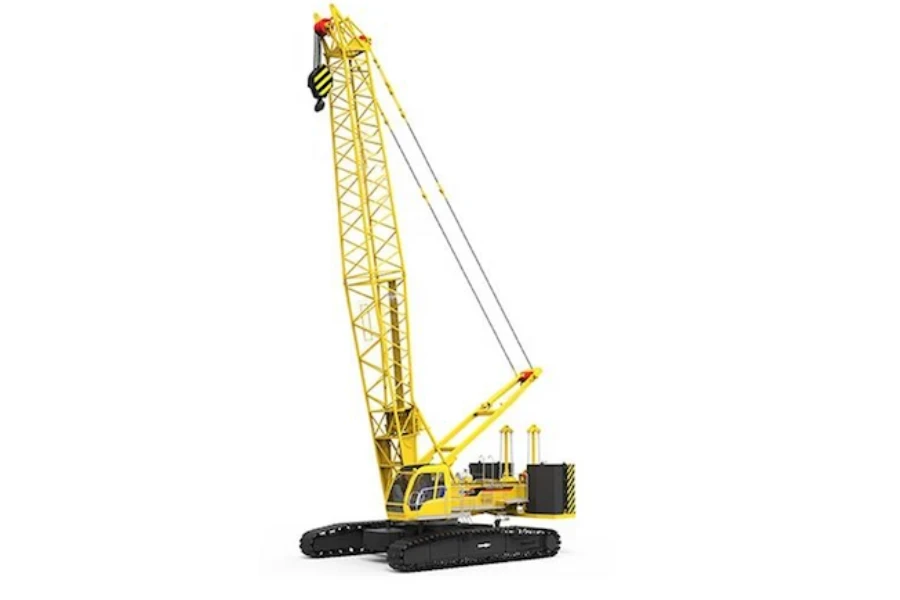
The XLC180 crawler crane has a lattice boom that can lift up to 180 tons to a height of 160 feet (50m). It sells for between US$ 200,000 and US$ 350,000.
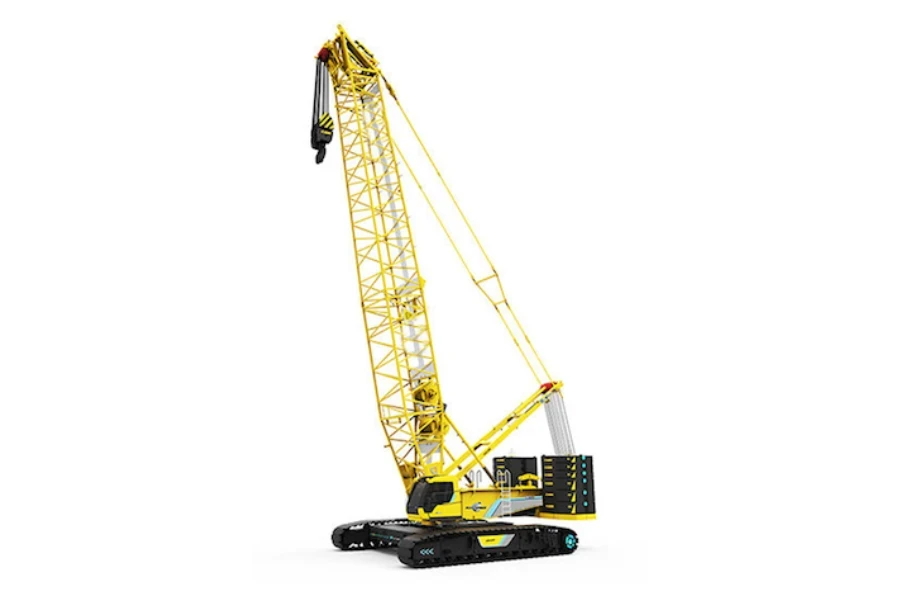
The XCMG XGC260 can lift up to 260 tons to a height of 322 feet (98m), and sells for between US$ 470,000 and US$ 500,000.
Above 300 ton super lift cranes
Crawler cranes above 300 ton capacity are super lift cranes that are used on the very largest projects. At these heights and weights they need to be very stable and are less likely to be moved frequently.

The Quy450 is a super lift crawler crane that has a lift capacity of 450 tons up to a height of 262 feet (80m) priced between US$ 340,000 and US$ 360,000.
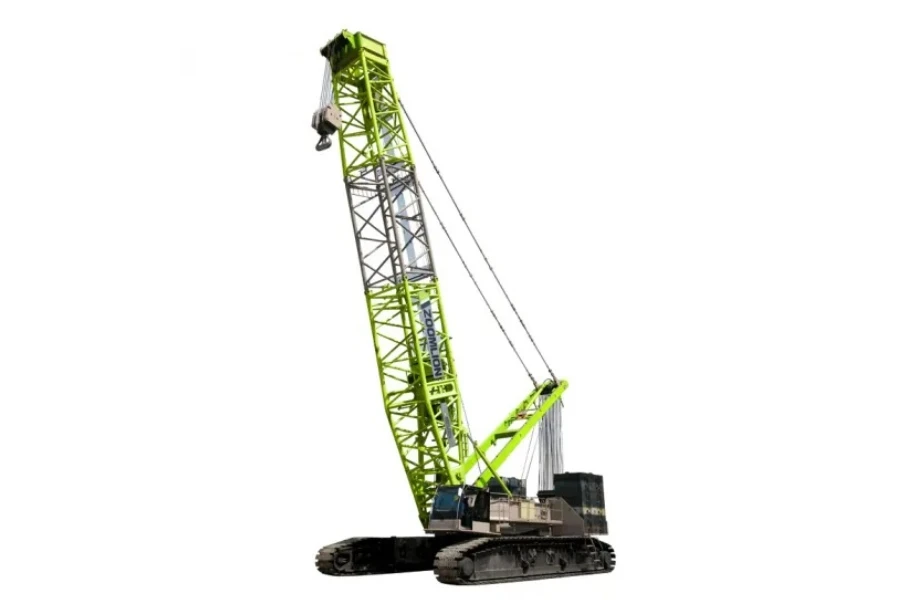
The Zoomlion ZC5000 crawler crane has a lift of 500 tons, up to a maximum height of 295 feet (90m). This machine is available for US$ 210,000.
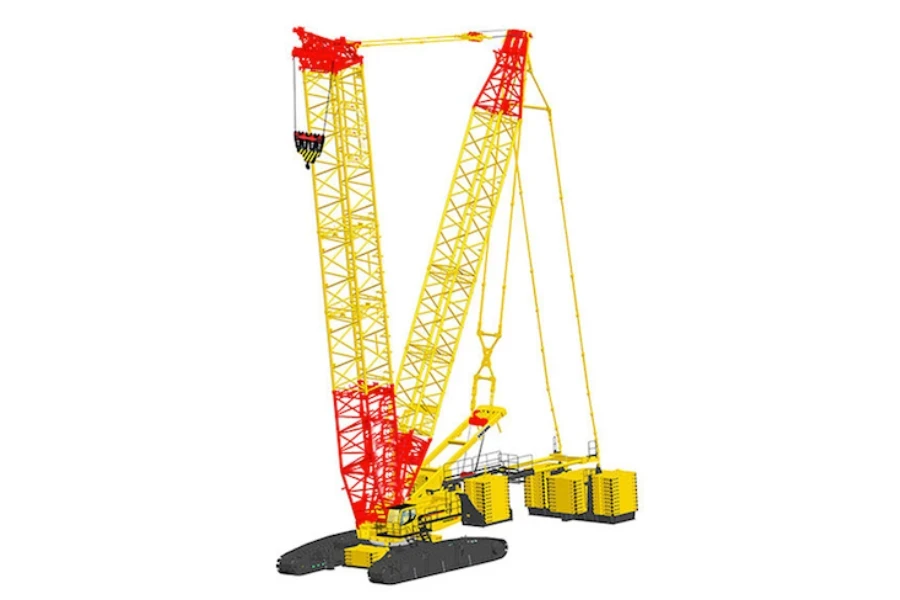
The XGC12000 is an 800 ton crawler crane with a maximum height of around 492 feet (150m). This model sells for between US$ 300,000 and US$ 700,000, depending on the number of units ordered.
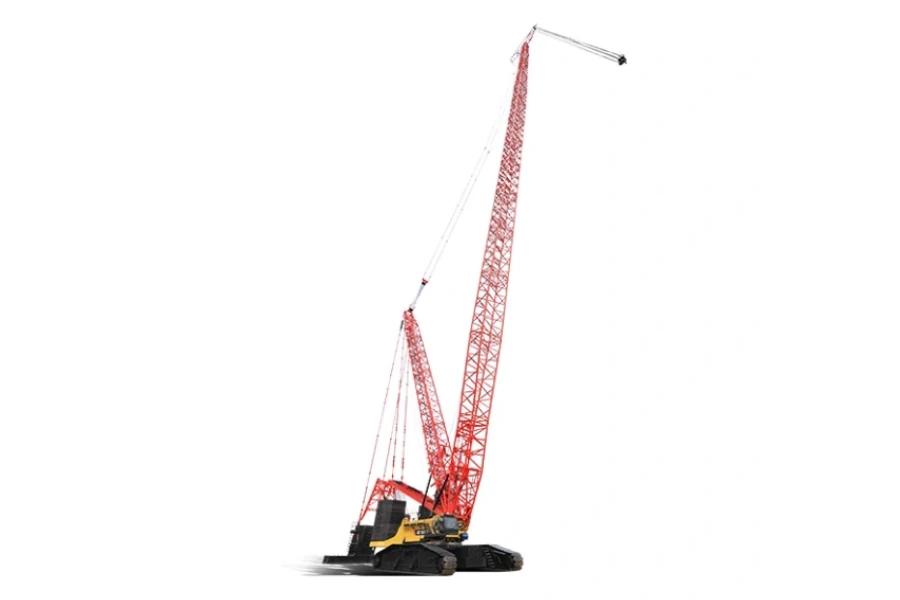
The SANY SCC15000TM is a big crane with a huge capacity of 1500 tons that can lift up to a height of 590 feet (180m), selling for between US$2.8m and US$ 3m.
Above these sizes, there are also crawler cranes available with much higher lifting capacity exceeding 3,000 tons. One such example is the massive XCMG XGC88000 with a 3,600 ton lift, which is so large that it uses a separate tracked section to carry the counterweights. Despite its size it can sell for as low as US$ 100,000 or up to US$ 1,000,000 depending on the number of units purchased.
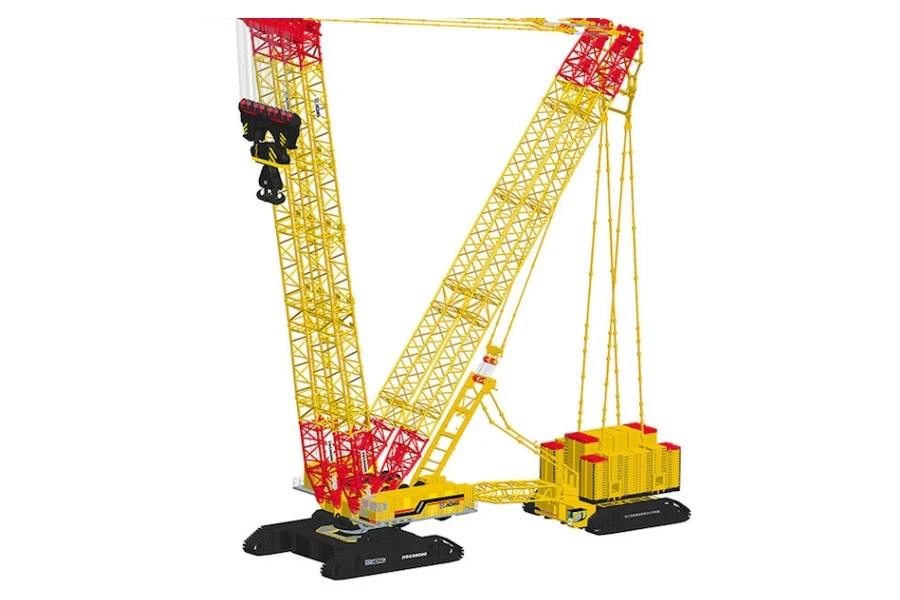
The importance of load sensors
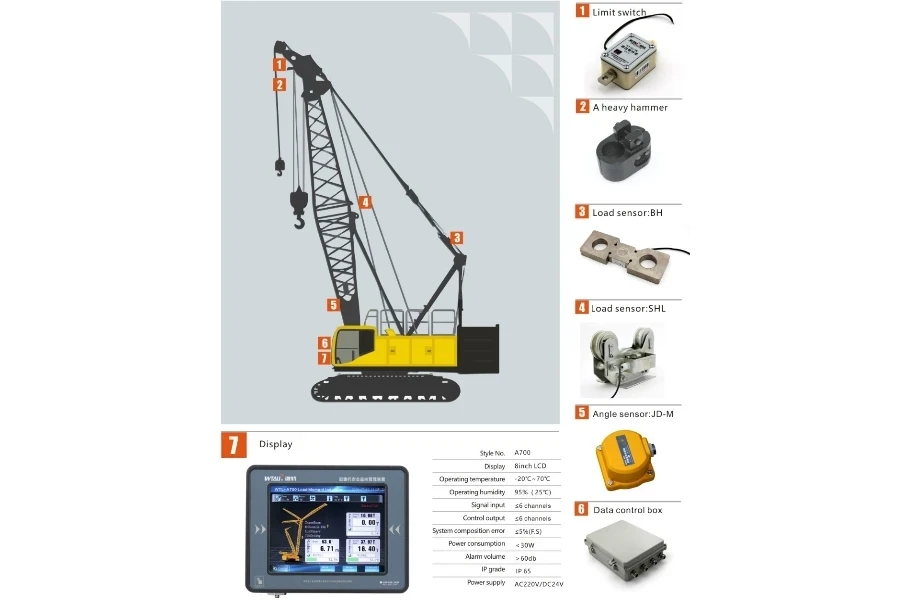
Safety and accident prevention are very important considerations for a crawler crane, especially for high operation, where overload or exceeding limits can lead to overturning or loss of load control. Most cranes use a Load Moment Indicator (LMI), consisting of a number of sensors placed at strategic points on the crane, to monitor performance and warn of dangers. An LMI system uses several sensors fed to a computer with real time data shown on a monitor. If this feature is not included with the crawler crane, it can be purchased separately and fitted for either lattice or telescopic boom cranes.
Final thoughts
A potential buyer will have a clear idea of the applications and projects in hand and will be able to easily decide on the size and capacity needed for a crawler crane. There are several major and less known brands available with a wide range of pricing, and brand reputation will be a factor in selection.
Crawler cranes vary in capacity from around 20-30 tons at the lower end to upwards of 1,500 tons. Height capability ranges from anything under 160 feet (50m) to up to 650 feet (200m). Smaller capacity machines offer the telescopic box boom options to give flexibility, strength and stability at the lower tolerances and may be most suitable for small sites, lighter lifts and lifts requiring some load movement.
The very big ‘super lift’ crawlers will be the most suitable for large scale construction, bridge, and wind farm applications. For these projects, maximum stability is paramount, and the additional LMI sensors may be essential requirements.
For more information on the wide selection of crawler cranes available in the market, check out the online showroom at Alibaba.com.



